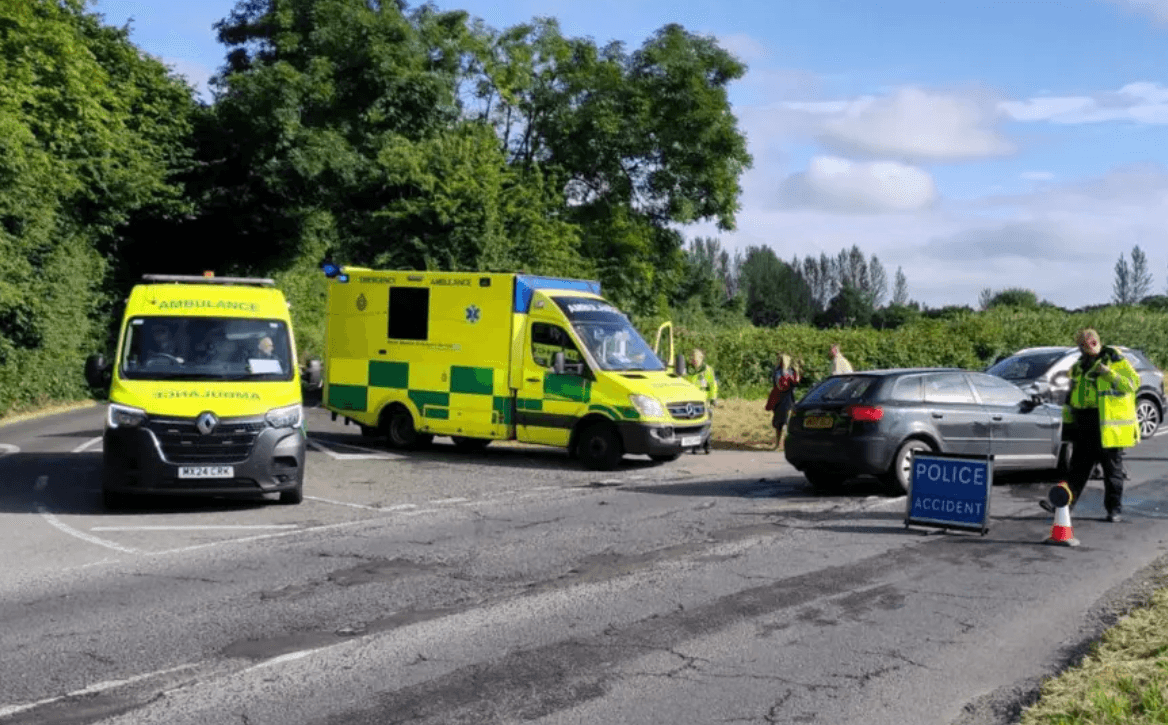Wiltshire Council recently acted to improve safety on rural roads. Local residents have long called for changes at the A360 Black Dog crossroads, located between Potterne and Littleton Panell, because accidents happen often there. This example shows that even quiet roads can be dangerous.
Anne Venus, a resident who was involved in a serious crash at the crossroads, recalled, “I had no warning, no reason to expect it… There was nothing else on the road but the one vehicle that hit me” (Venus). Her experience shows that accidents often result from road design rather than only driver behavior.
The council installed traffic lights with a lower speed limit. Temporary signals are already working while full installation is expected to take about thirteen weeks. Traffic lights control speed and flow, but modern millimeter-wave (mmWave) radar sensors add a smart layer of safety that goes beyond traditional methods. These sensors support smart traffic management and help prevent accidents before they occur.
How Millimeter-Wave Radar Works
Millimeter-wave radar uses radio waves in the 30–300 GHz range (IEEE Radar Systems). Unlike cameras, it does not rely on visible light. The radar sends out waves and reads the echoes to detect objects. This allows it to work in fog, rain, snow, or dust.
The radar tracks distance, speed, angle, and path for cars, bikes, and pedestrians. It has high accuracy and very fast response times. Because of this, it supports predictive collision avoidance systems, which can detect hazards even when drivers cannot see them.
How Radar Helps at Dangerous Intersections
At busy or dangerous junctions, mmWave radar works alongside traffic lights in an Intelligent Transportation System (ITS). It improves safety in several ways.
Adaptive Traffic Signals
Normal traffic lights follow fixed schedules, which can slow traffic and cause risky behavior. Adaptive signals use real-time data from the radar. They change light timing to give more green time to busy lanes and shorter waits for others. This approach can increase traffic flow by about 20% (Transport Research Laboratory).
Protecting Pedestrians and Cyclists
Radar can tell the difference between cars, trucks, bikes, and people. It watches vehicles continuously and notices dangerous behavior like speeding or sudden turns. It also detects vulnerable road users (VRUs) even when they are partly hidden. The system can send warnings that help prevent crashes.
Early Warnings and Vehicle Communication
When connected to Vehicle-to-Infrastructure (V2I) networks, radar can warn connected cars equipped with ADAS before a crash might happen. Even a small amount of time can prevent serious accidents. The system can also record red-light violations, which discourages unsafe driving. Research shows that such monitoring can reduce violations by about 35% (National Cooperative Highway Research Program).
Using Data to Plan Safer Roads
Radar collects anonymous data on vehicle types, turning patterns, speeds, and queues. This information helps planners design safer intersections and improve traffic control (Linpowave Traffic Solutions).
Radar in Rural Areas
Rural roads can be hard to see because of sudden weather changes or low light. MmWave radar keeps working when cameras fail. It mounts on poles with no moving parts, so it requires little maintenance. It only measures motion, not images, which protects privacy (Linpowave Privacy Policy).
Combining traffic lights with radar monitoring creates a safer, more reliable system for rural intersections.
Frequently Asked Questions
Q1: Does mmWave radar work in bad weather?
A: Yes. It uses radio waves, so fog, rain, or dust does not stop it (NIST mmWave Radar Research).
Q2: Is it only used in vehicles?
A: No. It is used in infrastructure for traffic monitoring and V2I systems (Linpowave Blog).
Q3: How fast does it detect hazards?
A: Detection happens in milliseconds. The speed allows early warnings and predictive traffic control.
Q4: Does it collect personal data?
A: No. Radar measures motion and produces point-cloud data rather than images (Linpowave Privacy).
Q5: What is its range and resolution?
A: It can detect up to 150 meters or more, with high resolution to tell multiple targets apart.
Q6: How is it different from loop detectors?
A: Loop detectors detect metal only, are buried, and do not track speed or path. Radar provides 4D data (range, speed, angle, height) and requires little maintenance (TRB Report on Radar vs Loop Detectors).
Q7: Can it detect pedestrians and cyclists?
A: Yes. It identifies VRUs accurately, even when partially hidden.
Q8: What data can planners get from radar?
A: Data includes vehicle type, turns, speeds, and queue lengths. This supports better road design (Linpowave Data Insights).
Conclusion
The changes at the A360 junction show progress, but roads need more than traffic lights for safety. Millimeter-wave radar provides a proactive, data-driven approach. It monitors intersections constantly, predicts hazards, and integrates with smart traffic systems. Using radar can reduce accidents, protect vulnerable users, and guide the design of safer roads.



